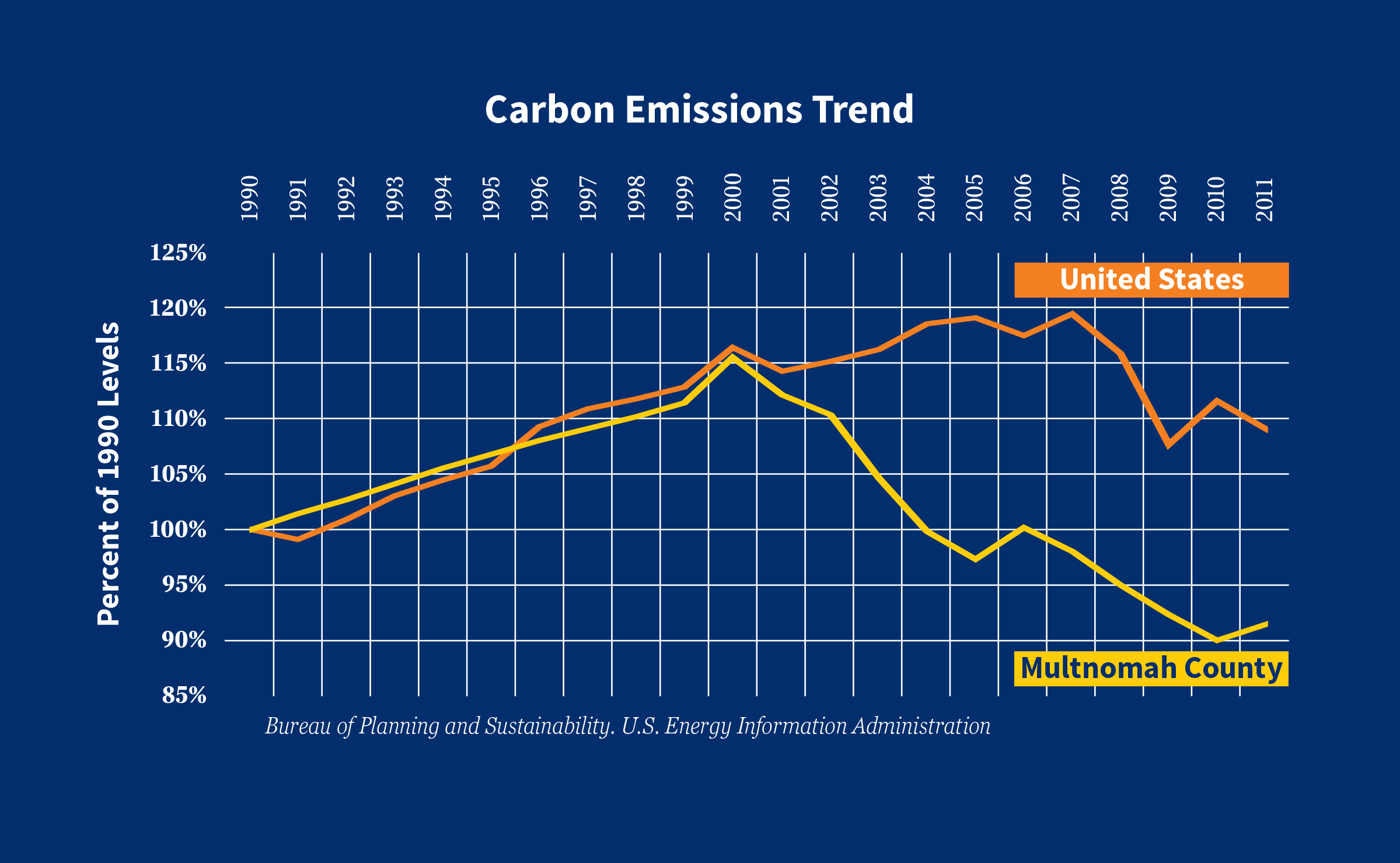To your right, you will find a graph about carbon emissions.
Unlike 99 percent of the graphs you will find about carbon emissions, this graph is a happy graph.
In Multnomah County, home of Portland, Oregon, carbon emissions are dropping at a crazy awesome rate. Between the year 2000 and today, carbon emissions dropped 20 percent.
According to Michele Crim, the Sustainability Manager for the Bureau of Planning and Sustainability in Portland, a lot of this is due to a community based program launched in 2009 called Solarize Portland. The idea behind the program was simple, as most brilliant ideas are.
Solar panels on a single buyer basis aren’t cost effective. It takes about 20 years for a single buyer to recoup the cost of buying and installing panels through energy savings. A group of Portlanders who live in the city’s Southeastern neighborhoods decided to band together in 2009 to invest in wholesale solar panel purchases that drastically reduced the price.
The wholesale rates effectively made the solar panels pay for themselves after four years of use.
The idea quickly spread to other neighborhoods, and the program is now being assisted by local government agencies.
Are you jealous yet? Do you too want to boast about Seattle having an epic downward trend in our carbon emissions charts?
Luckily, Seattle is jumping in on the action with its own solar program.
Seattle City Light is launching a Solarize Seattle campaign where residents in Central/Southeast neighborhoods can sign up for a wholesale group buy as well. Residents in Capitol Hill, Montlake, Madison Park, Madison Valley, Central District, Madrona, Beacon Hill, Columbia City, Mount Baker, Rainier Beach, and Rainier Valley are all eligible to register for the program by October 5th. Participants attend a free workshop and then have their homes evaluated before signing the final contract.
Citizens have another option as well. The “Community Solar” program “allows a single utility-owned solar-electric system to produce energy that is credited to multiple customers who pay for a portion of the system cost up front. Instead of installing panels on their own homes or businesses, community members can ‘subscribe’ to receive the benefits of an optimally located and sized solar system built and maintained by Seattle City Light.” This groupshare option costs a piddly $150.
So, if you are interested in saving money on power bills, making the Earth a better place to live, and catching up with Portland (and our incredibly on-the-ball solar rivals, Germany), Seattle City Light’s got your back.
Let’s make Seattle’s roofs replete with shiny voltaic squares.








